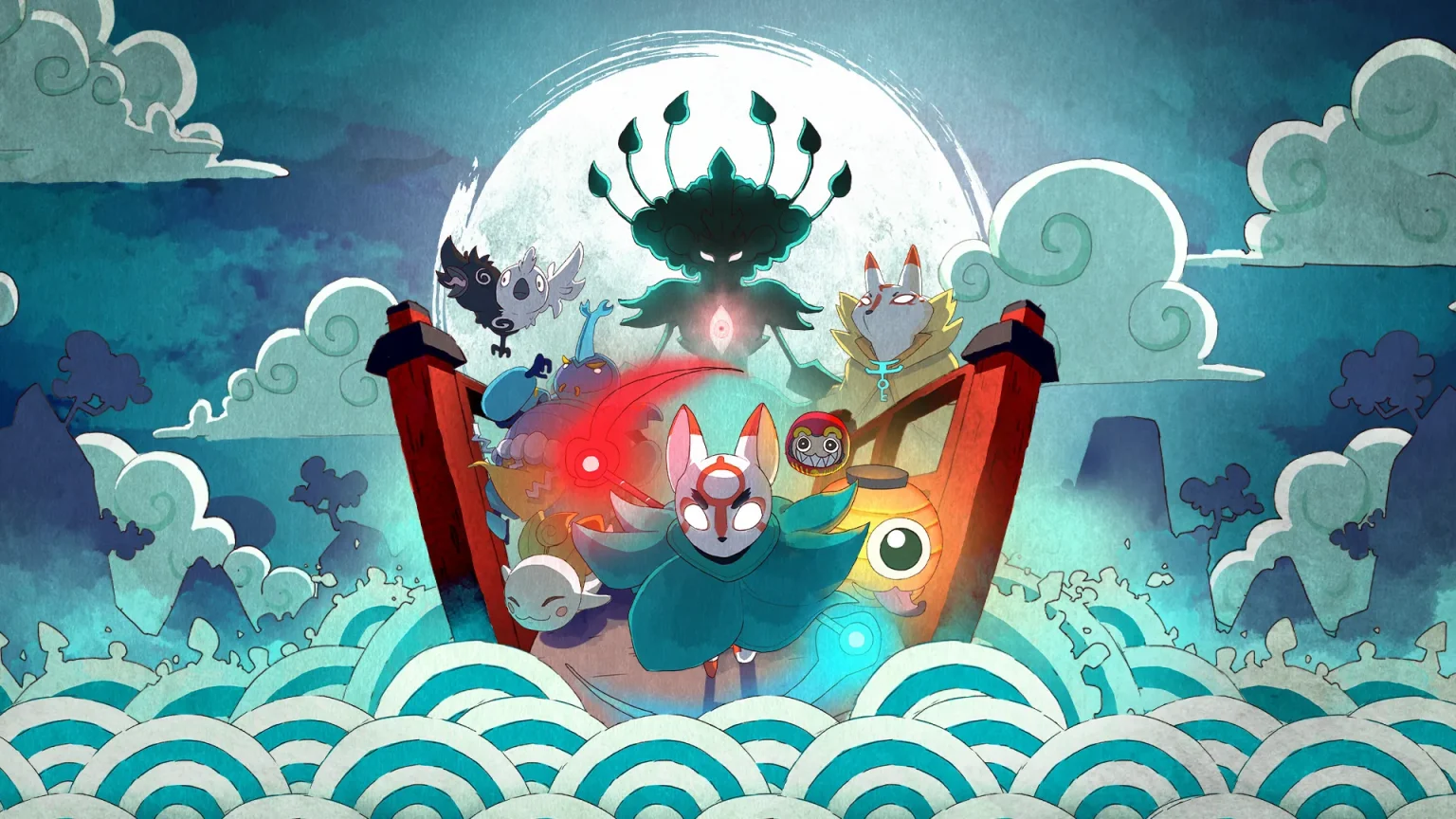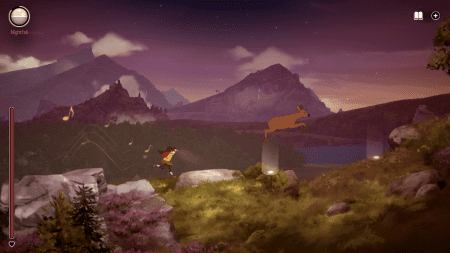In a gaming landscape filled with ambitious projects, Bō: Path of the Teal Lotus by Squid Shock Studios stands out with its unique blend of charming, hand-drawn art and heartfelt storytelling. Released at a tumultuous time for the gaming industry (publisher Humble Games included), the game’s themes of life’s fragility and fleeting nature feel particularly relatable.
As the credits rolled, I couldn’t help but reflect on how even the most beautifully crafted worlds, like those in Bō: Path of the Teal Lotus, remind us of the impermanence that pervades both life and the industry that brings these worlds to life.
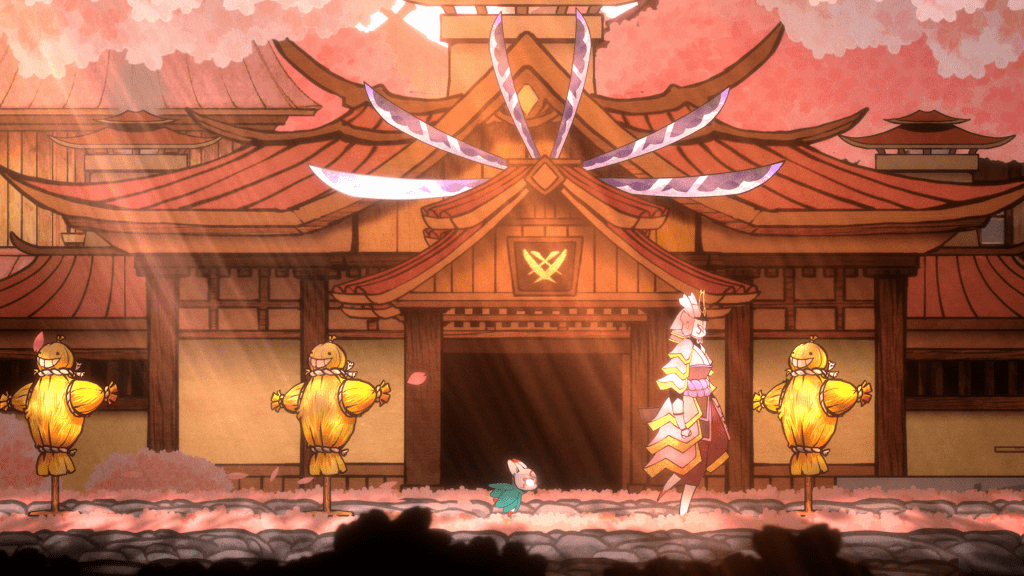
A Journey Through Myth and Legend
Set in a vibrantly colorful, hand-drawn world inspired by Japanese folklore, Bō: Path of the Teal Lotus introduces players to a richly imagined universe where the supernatural and the whimsical intertwine. You play as the titular Bō: a Tentaihana, or spiritual being blessed by the gods. Bō sets out to help the various spirits scattered across the land, gathering foxfire (the game’s currency) along the way.
Tentaihana are mystical beings that bloom from plants nourished by a god’s tear, each taking the form of an animal—in Bō’s case, a Kitsune, or fox. These beings are believed to be born from sorrow, destined to fulfill a specific purpose. Although the identity of the god who wept and created Bō remains a mystery, Bō’s arrival in the Crimson Bamboo Forest of the Sakura Kingdom coincides with a time of great turmoil.
The sense of impending doom is symbolized early on when you witness an ill omen—a colossal shadow of a skeleton demon marching ominously through the background. As Bō, you seek to uncover the source of the various tragedies plaguing the Sakura Kingdom. Along the way, you encounter other Tentaihana, each on a unique mission, further deepening the sense of a world where tragedy and destiny are intertwined.
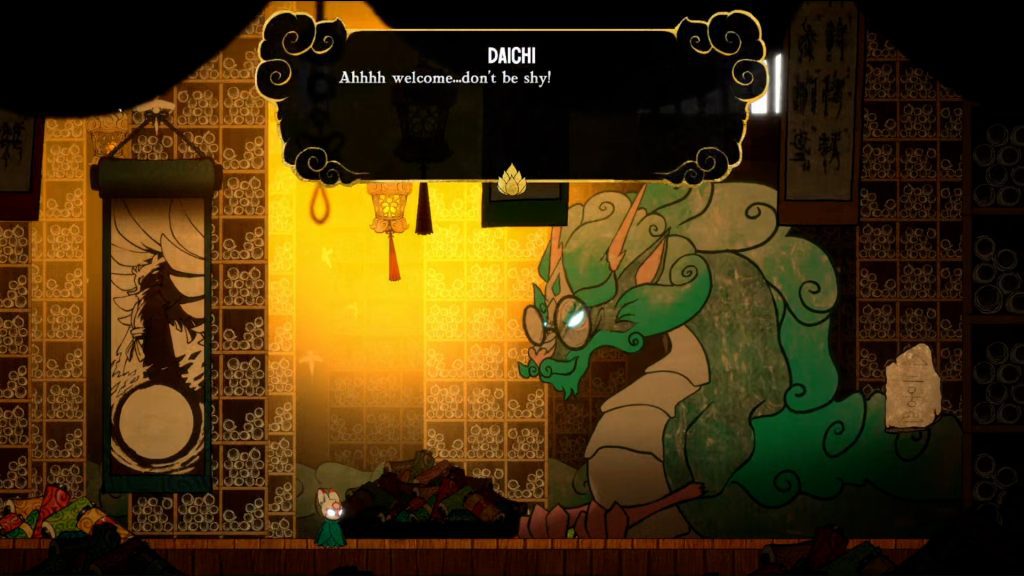
The art direction is stunning, with vivid backdrops that look meticulously hand-drawn on textured paper, capturing the essence of traditional Japanese ink brush paintings. A diverse cast of characters inhabits the world, from rambunctious sumo wrestlers to lonely souls seeking solace in giant tea kettles. Each drips with style and creativity.
Exploring the World of Bō
Bō: Path of the Teal Lotus excels in world-building beyond just visuals. The missions are divided among three main clans—the Kitsune, Kabuto, and Tengu—each with distinct cultural identities. As you explore, you’ll uncover ancient scrolls that reveal the lore of the land, adding depth to the game’s narrative.
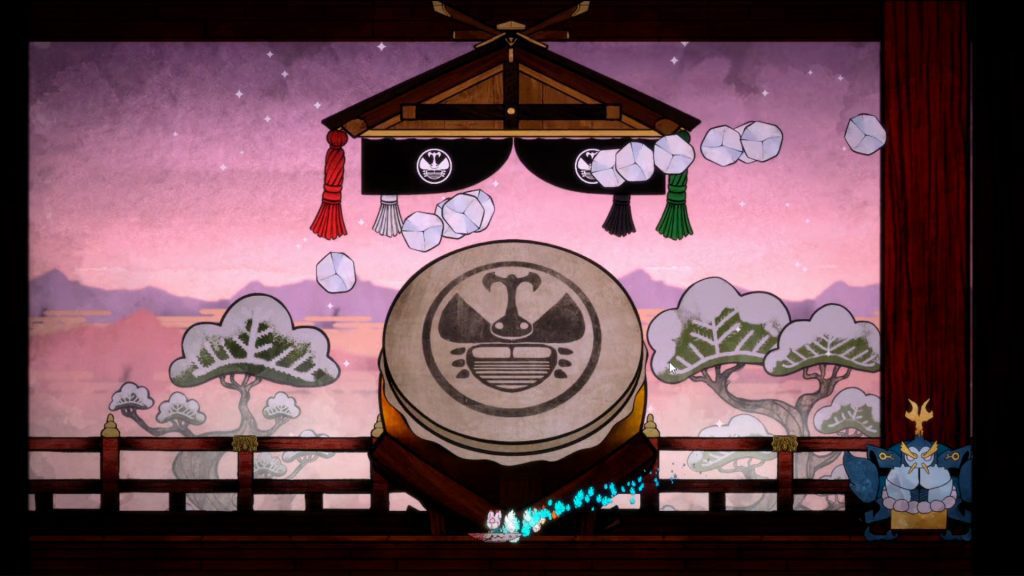
A significant highlight was the game’s clever platforming puzzles, which draw the player further into the beautiful world. While some of the lever-based puzzles can be frustrating, those moments are offset by the satisfaction of solving complex challenges, especially when using the game’s slingshot mobility mechanic. Puzzles serve to add layers to progression and encourage players to seek out treasures.
I loved how the game handles collectibles. Each item you find—from Kodama (spirits) to various raw materials—serves a purpose, whether it’s upgrading your teapot (which is used to restore health) or constructing new buildings in Sakura City. There’s no frivolous hoarding or inventories to sift through, nor an overwhelming skill tree to manage. The focus remains on meaningful progression, keeping the gameplay streamlined and rewarding.

The one place where the world stumbles is with the game’s fast travel system. It’s pretty limited, often meaning long treks between previously visited areas until you unlock more conveniently placed fast travel points. To speed the game up, I primarily equipped Bō with charms—another Metroidvania staple—that grant the titular character the ability to move and attack faster. You can switch out the charms at altars, which is key to successful battling.
Dancing With Daruma Allies
Combat in Bō: Path of the Teal Lotus is a dance of precision and timing. Your primary weapon is your Equinox staff, which doubles as a stylish earring. Attacks are slow and deliberate but can be adjusted depending on the charms you use. You can upgrade the staff’s attack power as well.
But the game’s strength is its aerial combat, clearly influenced by Hollow Knight. It has a refreshing twist, where each successful attack in the air grants you an additional jump, building up a combo meter that powers up your special weapons over time. These powers, represented by Daruma allies, are what truly set the combat of Bō: Path of the Teal Lotus apart from other Metroidvanias.
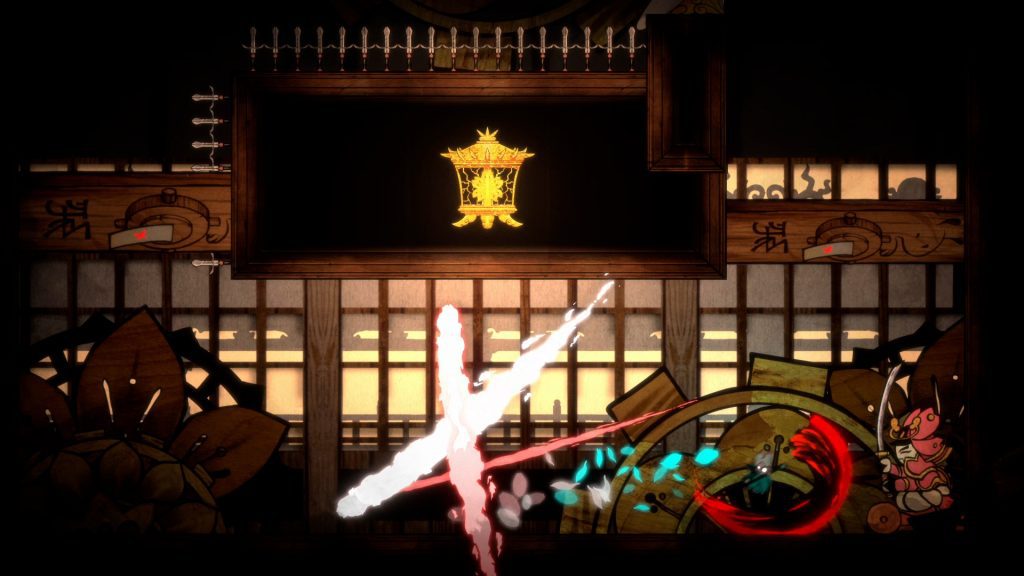
You can tailor your approach to each boss encounter by switching between your Daruma. These eight charismatic Daruma dolls, available on the fly through a weapon wheel, offer a variety of attacks and effects. For instance, the Chomper Daruma, with its large, sweeping bites, is perfect for clearing out waves of smaller enemies, while the Ken Daruma, which acts like a ninja star, excels during more stationary boss fights. I relied on different Daruma depending on the bosses I faced, making each battle feel unique and rewarding.
The game’s focus on aerial combat keeps the action fresh, but Bō’s combat isn’t without its flaws. While regular enemies often require careful planning, I found the bosses surprisingly easy to dispatch—except for the final boss, a formidable opponent with multiple stages and unique attack patterns that will test your skills and patience. The platforming journey to reach these bosses was often more challenging than the battles themselves, resulting in some anticlimactic moments.
Impermanence in an Impermanent Industry
As I journeyed through the world of Bō: Path of the Teal Lotus, I couldn’t ignore the eerie parallels between the game’s themes of loss and the abrupt “not shutdown” of Humble Games, the publisher behind this title.
Immediately after Humble’s layoffs, Squid Shock—a two-person development team formed by Chris Stair and Trevor Youngquist—thanked Humble Games’s employees and emphasized that the cuts didn’t affect staffing at their studio. However, that’s not to say the duo made it out unscathed. The studio shared that the Humble changes meant they “lost access to the pipeline of critical systems without warning.”
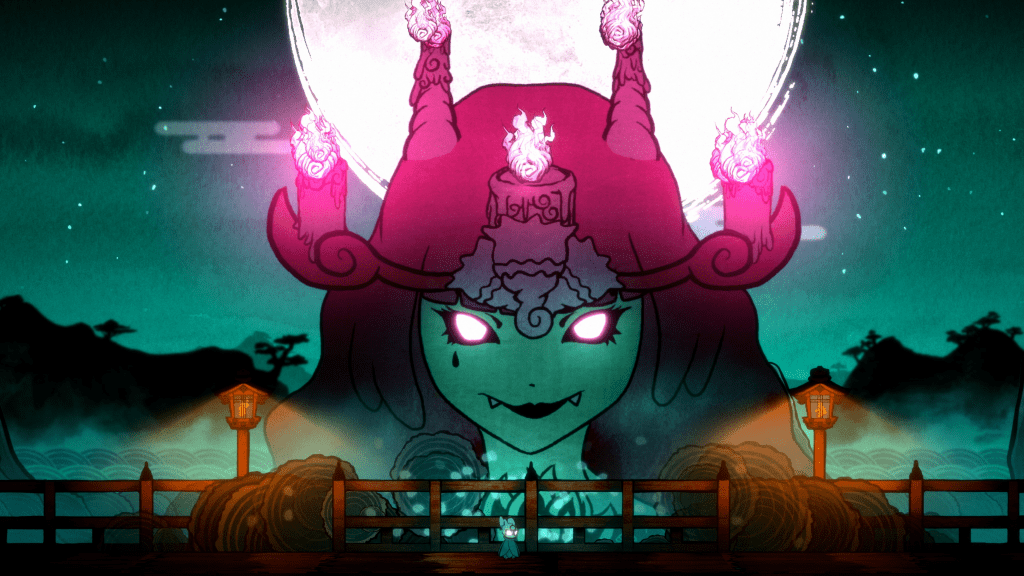
The situation casts a shadow over the industry’s future, as well as that of Bō. In a statement reflecting on the two difficult weeks since launch on July 17, Squid Shock shared that they want to continue their work, with or without the financial support they’d been counting on from Humble. To propel these efforts, they’ve made a Patreon to help fund future content.
For the past two years, the gaming industry has been rocked by waves of layoffs with talented individuals suddenly finding themselves without work. It’s a reminder that, much like the world of Bō, even the most vibrant creations are subject to the harsh realities of impermanence.
Final Thoughts
Bō: Path of the Teal Lotus is a beautifully crafted Metroidvania that captivates with its engaging gameplay, blending Japanese folklore with a heartwarming story. While there are moments where the game’s pacing stumbles—particularly during some of the more punishing platforming sections—the overall experience is enriched by its charming characters, gorgeous art, and thoughtful themes. The game’s conclusion, reflections on life’s fragility and the fleeting nature of beauty, lingers long after the credits roll.

Despite its flaws, the roughly 12.5 hours I spent with Bō: Path of the Teal Lotus were delightful. The game’s solid combat, intricate world-building, and emotional storytelling make it a must-play for fans of the Metroidvania genre and anyone who admires art itself.
Score: 8.3/10
Bō: Path of the Teal Lotus, developed by Squid Shock Studios and published by (the now-all-but-defunct) Humble Games, is available now on PlayStation 5, Xbox Series X/S, Nintendo Switch, PC, and Mac. MSRP: $19.99.
Disclaimer: A review code was provided by the publisher.
Donovan is a lifelong gamer with a love for fast-paced, single-player action games—especially Devil May Cry, Metroidvanias, indies, and action RPGs. He’s also an “advanced scrub” at fighting games and will play just about anything fun. Donovan is passionate about seeing more diverse characters and creators in the industry—or at least better hair options for Black people. With over a decade in journalism, he joined The Punished Backlog in 2023 to write more about what he loves. Follow him on Twitter and Instagram @dono_harrell.


